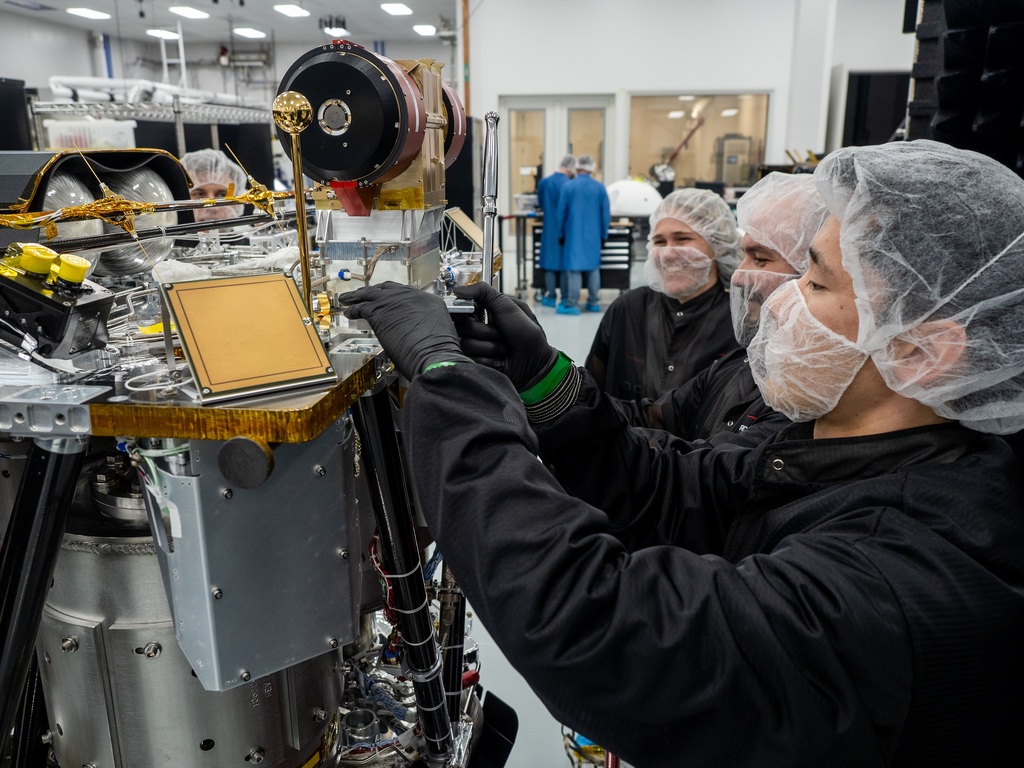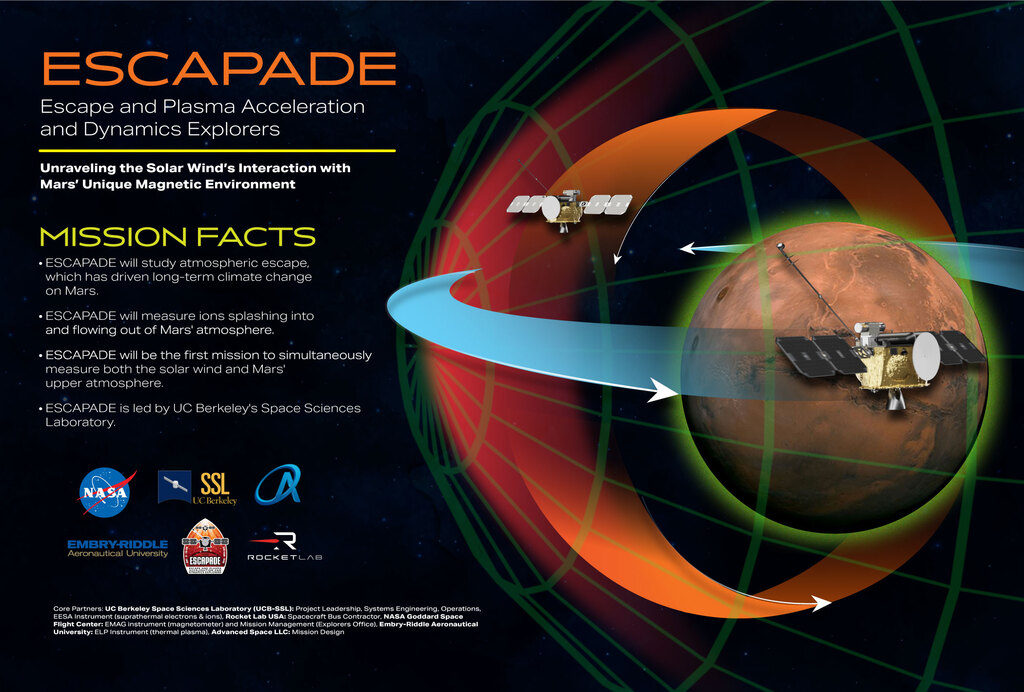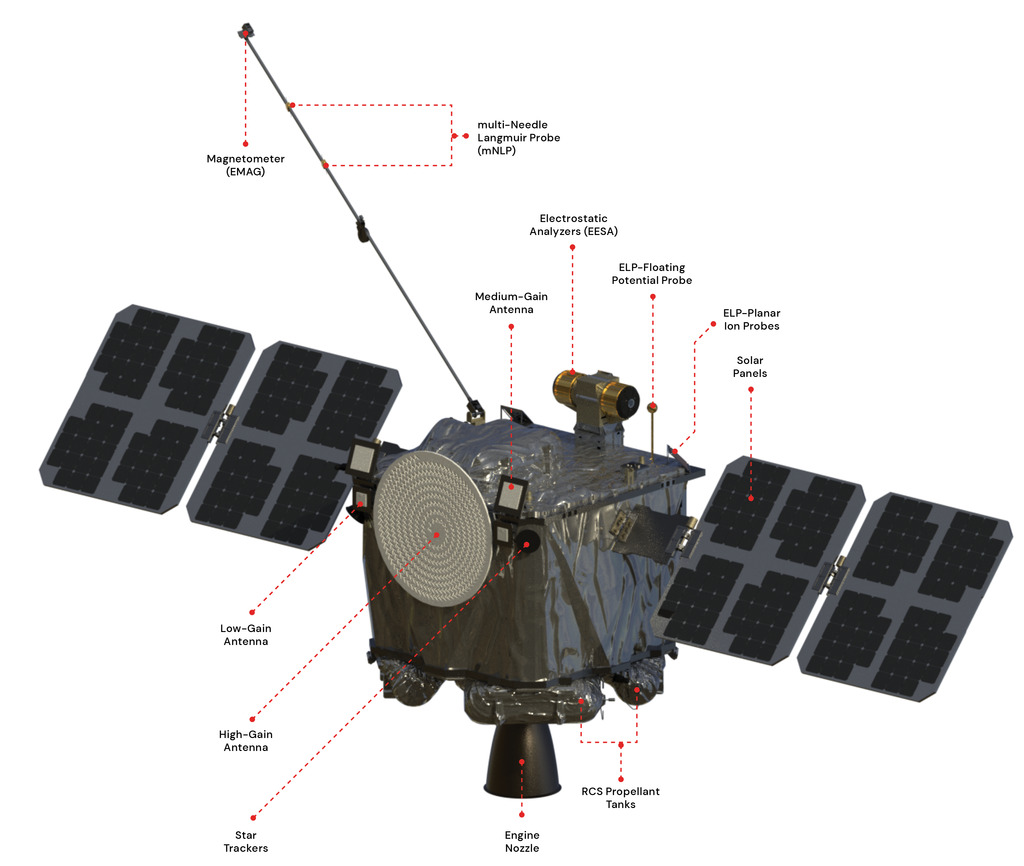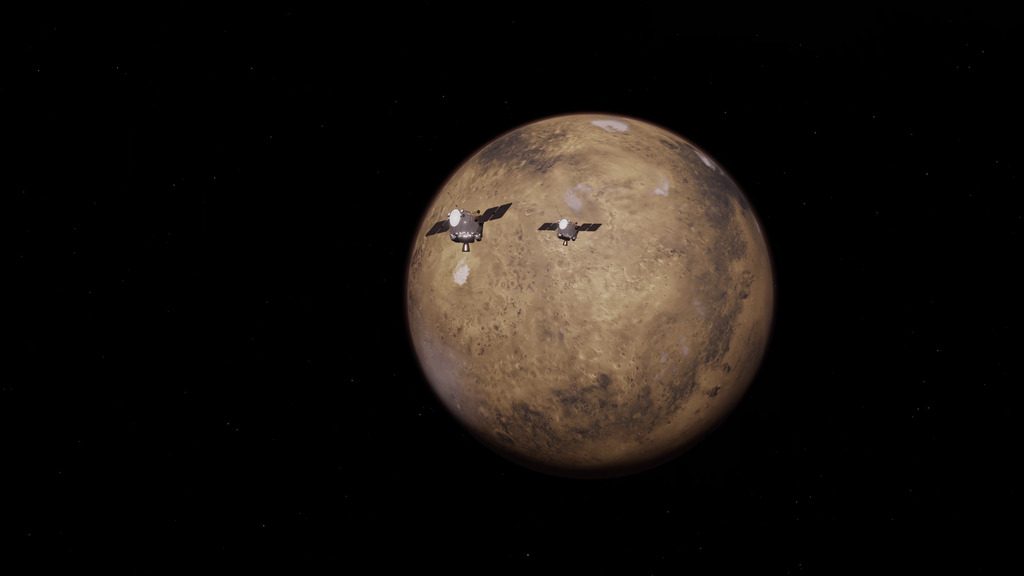ESCAPADE Instrument Build and Testing
The Escape and Plasma Acceleration and Dynamics Explorers, or ESCAPADE, will use two identical spacecraft to investigate how the solar wind interacts with Mars’ magnetic environment and how this interaction drives the planet’s atmospheric escape.
The first multi-spacecraft orbital science mission to the Red Planet, ESCAPADE’s twin orbiters will take simultaneous observations from different locations around Mars to reveal the planet’s real-time response to space weather and how the Martian magnetosphere changes over time.
ESCAPADE will analyze how Mars’ magnetic field guides particle flows around the planet, how energy and momentum are transported from the solar wind through the magnetosphere, and what processes control the flow of energy and matter into and out of the Martian atmosphere. The data returned from the ESCAPADE spacecraft will provide new insight into the evolution of Mars’ climate, contributing to the body of research investigating how Mars began losing its atmosphere and water system.
The ESCAPADE mission is managed by the Space Sciences Laboratory at the University of California, Berkeley, with key partners Rocket Lab, NASA's Goddard Space Flight Center, Embry-Riddle Aeronautical University, Advanced Space LLC, and Blue Origin.
Dr. Phyllis Whittlesey (EESA-e instrument lead) is demonstrating the subsystem components of an Electrostatic Analyser, and how the components interface with each other.
Footage Credit: University of California, Berkeley/Patrick Farrell
Dr. Phyllis Whittlesey (EESA-e instrument lead) is demonstrating the subsystem components of an Electrostatic Analyser, and how the components interface with each other.
Footage Credit: University of California, Berkeley/Patrick Farrell
Dr. Phyllis Whittlesey (EESA-e instrument lead) is inspecting a Micro Channel Plate (MCP), the main detector element of an Electrostatic Analyzer. These detectors must be particle and moisture free to ensure proper operation.
Footage Credit: University of California, Berkeley/Patrick Farrell
Dr. Phyllis Whittlesey (EESA-e instrument lead) is manipulating subsystem components on the flow bench. The Engineering Model (EM) instrument is disassembled to perform subsystem verifications and to implement minor engineering modifications.
Footage Credit: University of California, Berkeley/Patrick Farrell
Engineers Jeremy McCauley and Van Shourt perform surface verification and functional checks on the deployable magnetometer boom test unit. Note the fine needles of the LP probe extending from the sides of the outer Boom section and the use of non-magnetic materials (PEEK plastic, carbon fiber and Titanium Bolts) within one meter of the Magnetometer.
Footage Credit: University of California, Berkeley/Patrick Farrell
Engineer Greg Dalton shows the Electrostatic Analyzer Aperture components utilized in an Ion or Electron instrument. Shown is the High Voltage Deflector position in the Analyzer and the principle of "steering" particles into the detector using electrostatic forces.
Footage Credit: University of California, Berkeley/Patrick Farrell
Engineer Greg Dalton preparing an engineering model actuator for testing. Performing fit checking of parts and verifying torque versus load of a fastener joint.
Footage Credit: University of California, Berkeley/Patrick Farrell
For More Information
Credits
Please give credit for this item to:
NASA's Goddard Space Flight Center
-
Producer
- Beth Anthony (KBR Wyle Services, LLC)
Release date
This page was originally published on Thursday, August 22, 2024.
This page was last updated on Thursday, August 22, 2024 at 2:48 PM EDT.




